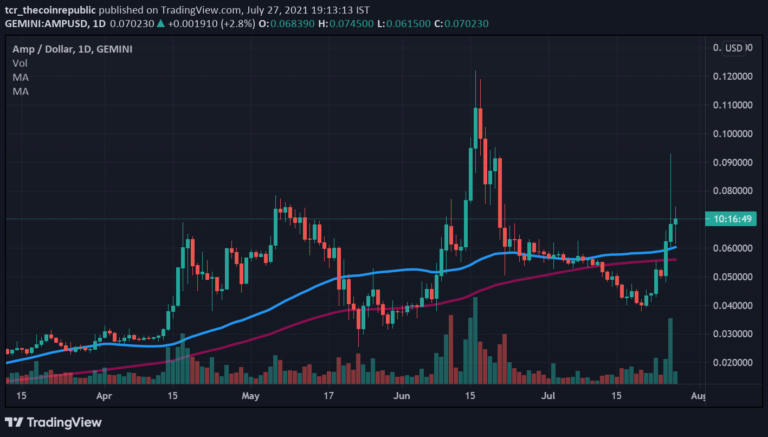

However, this had very little effect on the token and the coin continued on a downtrend, hitting lows of $0.02102 on 18 April 2022, the lowest value recorded in over a year. On 31 March, Amp retweeted the following development: The token jumped to $0.07 on the day of the annoucement but eventually crashed back to $0.04.ĪMP has largely been stuck in a bearish trend since, although it managed to climb slightly to $0.05 on 3 January 2022, when asset manager Greyscale announced an AMP fund. Its next breakout followed the announcement that Binance was listing the token to all its users on 23 November 2021. Over the next few months, the price of AMP gradually fell and by October it had dropped below $0.05. On 28 July 2021, the day that was announced, AMP climbed back to $0.07. But the token eventually saw another rally after Binance US made the coin available to its users. It stooped even lower to the $0.04 mark in mid-July. This fuelled the token’s all-time high of $0.12 on 16 June 2021.ĪMP saw a significant correction after its new price record, and by the end of the month it had dropped back down to $0.05. The collateral token was listed on Coinbase for users to buy and sell. The following month, AMP saw its biggest breakout to date. Two days later, Dogecoin was added as a payment method on the Flexa network. On 5 May, Amp announced users could borrow and lend the token on the DeFi app Yield. May 2021 proved to be an even more exciting month for the collateral token. AMP revealed it was seeing strong demand for the token following its listing on the liquidity platform Bancor. It saw its next breakout on 18 April 2021, when it raced to $0.06. The token did correct slightly after that but managed to sustain above the $0.01 level. In the next three days, AMP surged to $0.03. This was partly driven by the bullish crypto market at the time, although the token did also see a listing on DeFi platform Cream Finance on 10 February. It was not until February 2021 that AMP saw its first rally. By the end of September it had fallen to $0.006, and it dropped even lower to $0.003 on 31 October 2020. The collateral token launched at $0.009 on 11 September 2020 and did not have much success in its first few months. The document goes on to say: “By enabling decentralised ownership and participation in financial networks, applications built on Amp can become orders of magnitude more cost-efficient than existing systems, and help eliminate the overwhelming deadweight loss of traditional social and economic structures for financial transactions.” AMP’s price history Fundamental economic models are derived to demonstrate that Amp functions as low-volatility collateral, with its value compounding exclusively as a result of the utility it provides.” This is achieved via virtuous feedback loops of increasing spending capacity coupled with a non-inflationary reward distribution. The white paper states: “Within distributed tokenised financial networks, Amp serves as a medium for accruing value while aligning the incentives of all participants. The white paper Amp: A Digital Collateral Token to Enable Immediate Settlement of Payment Transactions was published in November 2020 and is 35 pages long. Investors are starting to recognise the innovative concept from Amp. Merchants can integrate Flexa and stake AMP to ensure payments are settled in real time meanwhile, AMP can be used by individuals for safe and speedy transfers of their own assets.Īs blockchains’ user bases continue to grow, there will be a growing need for a scalable and secure platform.

It is built on the Flexa network and has listed two main uses. Users can stake cryptocurrency with every transaction, to guarantee the transaction will go through.Īmp was launched by Tyler Spalding, the founder of Flexa Network. Amp’s solution to this is collateralisation. Security is necessary to ensure every transaction is safe, while speed is crucial to roll out a blockchain to the masses. There is a conundrum in the crypto world as to whether to prioritise speed or security. So, is collateral the future of payment, and can we make an Amp price prediction? What is Amp (AMP)? There are already more than 40,000 locations using the network, and its token has begun to see success. The collateral token only launched at the end of 2020, but it has come a long way. But Amp, via its AMP token, is using collateralisation to ensure network users do not have to compromise on either speed or security. Blockchains are finding this a little more difficult.

As customers, we have grown used to paying for goods instantly and not having to worry about security.


 0 kommentar(er)
0 kommentar(er)
